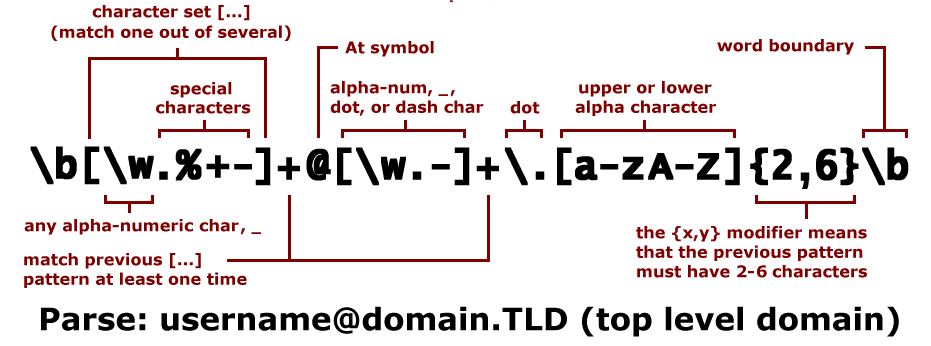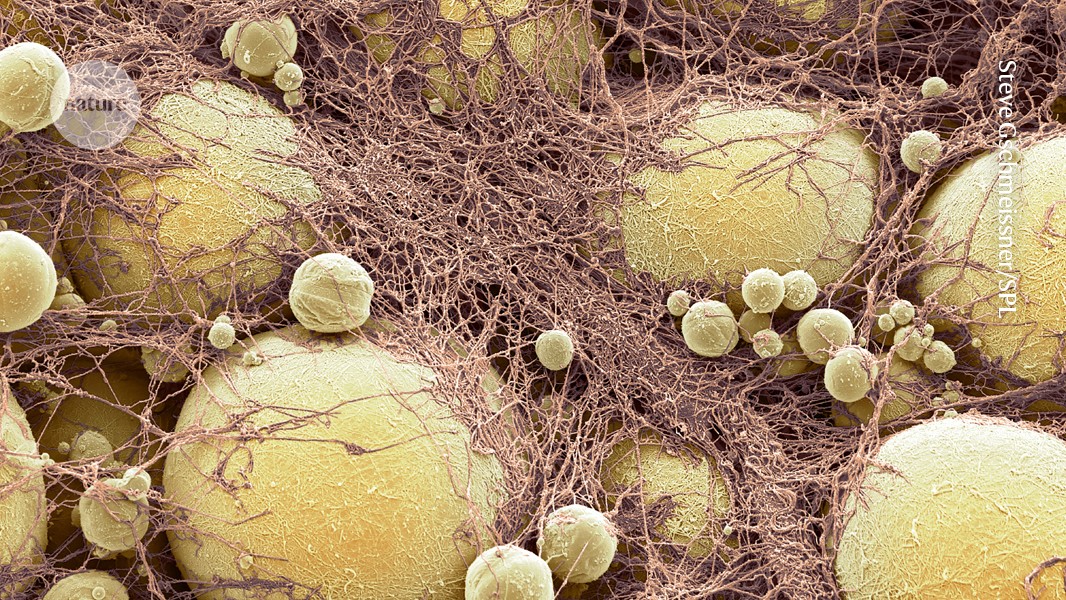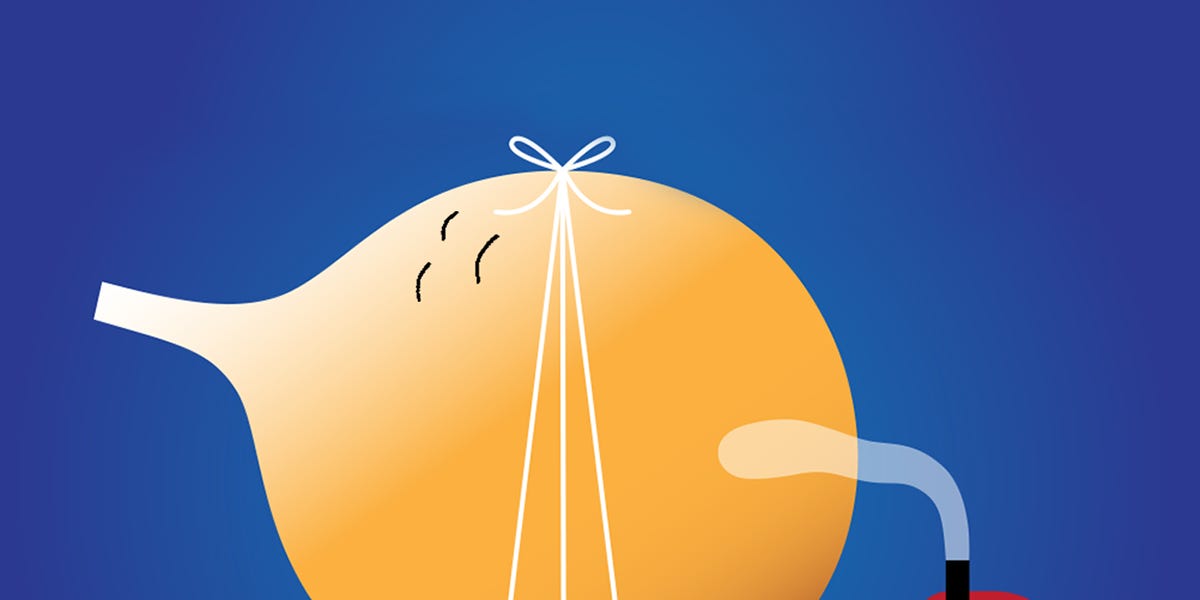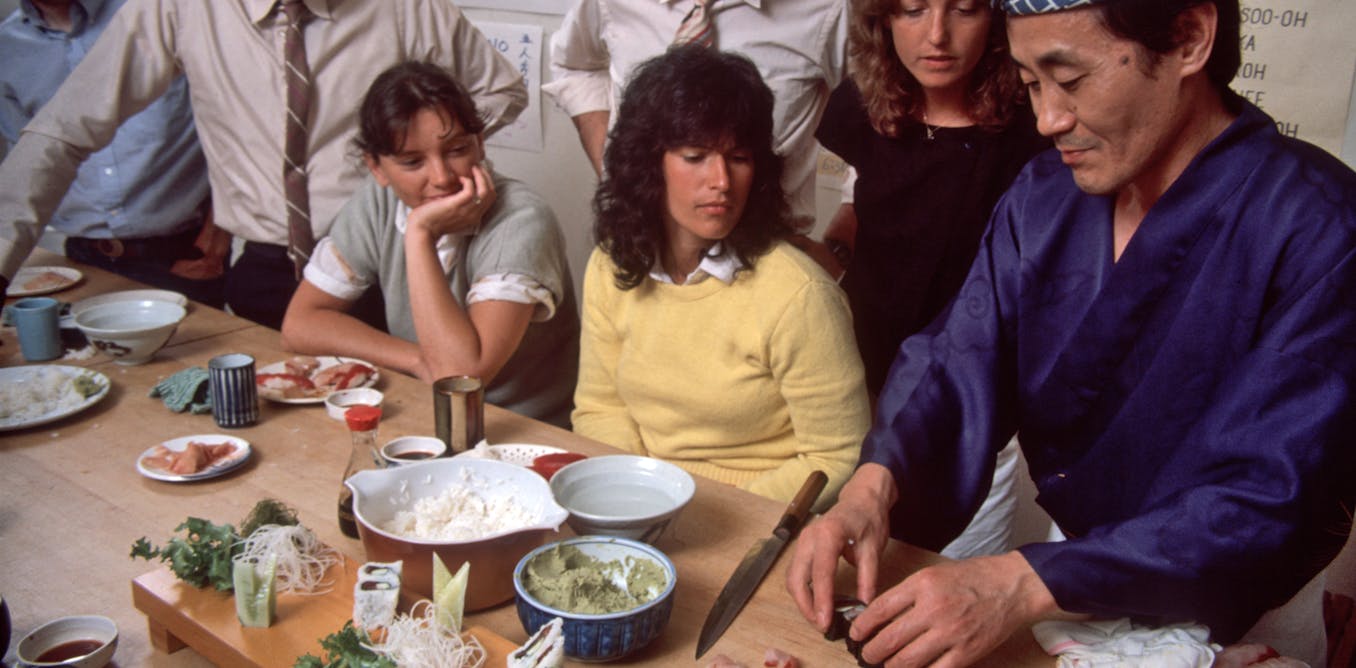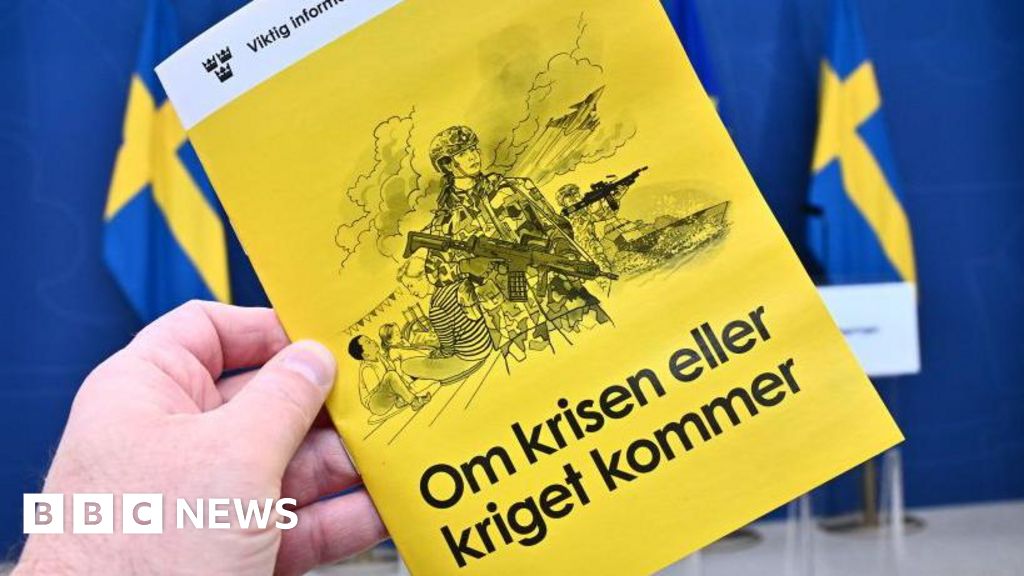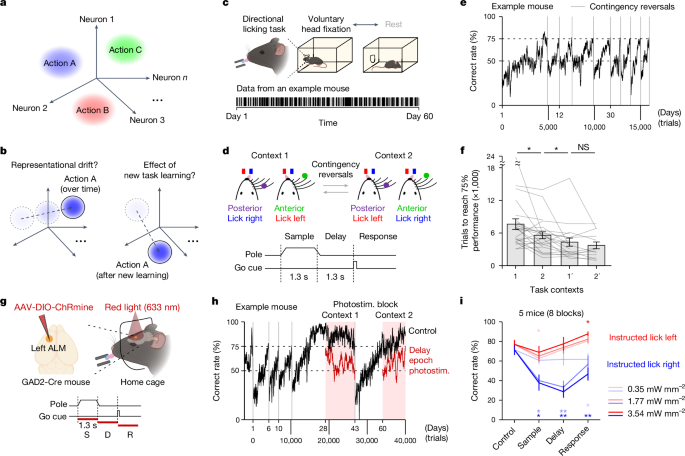
A combinatorial neural code for long-term motor memory
Motor skill repertoire can be stably retained over long periods, but the neural mechanism that underlies stable memory storage remains poorly understood1,2,3,4,5,6,7,8. Moreover, it is unknown how existing motor memories are maintained as new motor skills are continuously acquired. Here we tracked neural representation of learned actions throughout a significant portion of the lifespan of a mouse and show that learned actions are stably retained in combination with context, which protects existing memories from erasure during new motor learning. We established a continual learning paradigm in which mice learned to perform directional licking in different task contexts while we tracked motor cortex activity for up to six months using two-photon imaging. Within the same task context, activity driving directional licking was stable over time with little representational drift. When learning new task contexts, new preparatory activity emerged to drive the same licking actions. Learning created parallel new motor memories instead of modifying existing representations. Re-learning to make the same actions in the previous task context re-activated the previous preparatory activity, even months later. Continual learning of new task contexts kept creating new preparatory activity patterns. Context-specific memories, as we observed in the motor system, may provide a solution for stable memory storage throughout continual learning.
In our lifetime we stably retain a myriad of motor skills. How learned actions are stored in motor memory remains poorly understood. In the motor cortex, specific learned actions are evoked by distinct patterns of preparatory activity7,9,10,11 (Fig. 1a). Preparatory activity is thought to provide the initial conditions for the ensuing dynamics dictating movement execution12,13,14,15,16, but its relationship to subsequent action remains obscure17,18,19. For example, it remains unknown whether preparatory activity states are linked to subsequent movement execution and therefore fixed for actions with identical kinematics; alternatively, preparatory activity might encode other cognitive variables associated with learned actions beyond the movement itself4,5,7,8,20.
